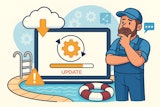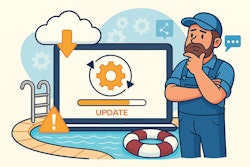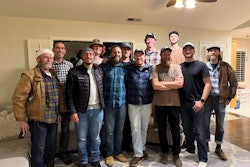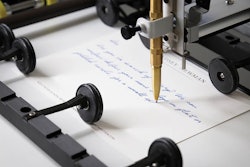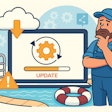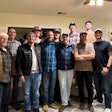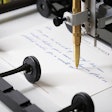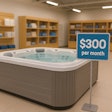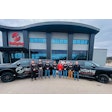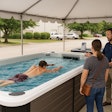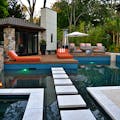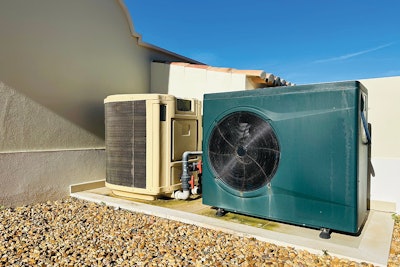
Convincing clients — and even convincing yourself — to upgrade existing pool equipment can be a daunting task. The important thing to remember is that pool equipment keeps getting better.
Broadly speaking, the pool industry often has the attitude of, "I'm doing it this way because that's how I've always done it," but that doesn't mean that method or that equipment is still the right way or the best way. In fact, sometimes an easier way has been created in the marketplace.
"We don't build the cars the same way we did 30 years ago," says Travis Bozick, P.E., principal and vice president of The Brannon Corporation in Tyler, Texas. "Why would we keep building pools the same way?"
Bozick, who has been teaching GENESIS courses on pool engineering for five years, points to new technologies for pool pumps, heaters, filters, lighting, and other equipment that improve the long-term enjoyability for clients.
POOL PUMPS
Some equipment upgrades aren't optional. The U.S. Department of Energy (DOE) determined that the pool industry was wasting millions of dollars each year and increasing national energy usage by running single-speed pumps all day, every day. New DOE Dedicated Purpose Pool Pump (DPPP) regulations went into effect in July 2021 that require DPPPs to meet minimum energy efficiency standards.
"Having the ability to have your pool pump act as a dimmer switch has been the biggest impact to our industry on reducing energy," Bozick explains. "It's more expensive on the front end, but the variable-speed pool pumps save electrical costs and save energy over the long term."
Bozick also highlights updates to circulation standards and energy codes, which have slowed down the recommended circulation rates. Less than a six-hour turnover used to be the norm, but today, it is the set point for most residential pools.
"When you slow the pumps down, the flow is reduced and water velocities in plumbing systems go down. That's a good thing. High water velocities increase headlosses and that is where energy losses are," he explains.
It is still permissible to have higher flows, if you have a larger pipe. Additionally, manufacturers have made larger port sizes on their equipment, such as 3-inch flanges on pumps and 3-inch flanges on filters, to account for larger diameter pipe systems.
"The industry is moving to remove higher water velocities," says Bozick. "That keeps headlosses down and makes the energy requirements to move water from Point A to Point B less."
 Growth in pipe diameter has lowered line velocities and thus, headloss in swimming pool circulation systems.
Growth in pipe diameter has lowered line velocities and thus, headloss in swimming pool circulation systems.
CHOOSING THE RIGHT EQUIPMENT
Bozick explains that in order to select the right equipment for your projects, you really need to understand what the client is wanting and expecting.
"If you're selling a premium product, you need to know what your client wants," he says. "That's the first step."
Using water features as an example, each client may be visualizing a different flowrate in their head. "What one person calls a waterfall may be a weeping wall to someone else, a sheetflow to someone else, or Colorado rapids to someone else," says Bozick. "They're all waterfalls, but what is the effect the client is looking for? You as the pool professional should know how to achieve that effect your client wants and how much flow you need."
There is also the question of what features will be operating when. Does the client want to operate the pool independently of the spa? Do they want to run a combined system? Do they want the waterfall running while the pool is on? "The pool professional needs to know how the client wants it to work so they can pick the right equipment to make it possible," Bozick says. Working out these details with your client ahead of time helps you determine if you need, for example, a dedicated feature pump or if you will be able to slipstream water off the main circulation to run certain features.
Going back to the value of variablespeed pumps, Bozick believes it is important to highlight to the client how much custom control they will have. The variable-speed pump gives the client complete control over what that waterfall looks like because of their ability to easily adjust the speed of the pump and, therefore, increase or decrease the flowrate.
SETTING UP THE EQUIPMENT PAD
"The goal of having the smallest equipment pad is a terrible goal," Bozick says.
It is important to ensure there is enough space on the equipment pad to service all of the equipment, he explains. "We've seen it so many times: Installers aim to land equipment on the smallest pad we possibly can, and now it's unserviceable. We can't fix anything on it. The service folks need space to work."
Bozick is a big supporter of bypasses and, in fact, recommends a bypass to any piece of equipment. Although they require more space on the equipment pad, he believes bypasses are a necessity.
"Without a bypass, if you have a broken heater, the entire pool is down due to one broken element," he says. "Most installers know a client that will not tolerate downtime." If you set up a bypass on your heater, the pool can continue running while the heater is being repaired or replaced.
Plus, Bozick notes, bypasses can reduce the amount of energy needed to transfer water through the mechanical system. "It's inefficient to run all your water through a heater," he says. Typically, 20 to 80 gallons per minute is the recommended flow for residential pool heaters.
Some manufacturers do indicate a maximum of how much flow they want to go through their heater. The installer needs to know that, commonly, the only way to meet the manufacturer's installation instructions is with a bypass.
Other energy saving devices, such as sweep-90 fittings — long used in other industries — have become best practice in the aquatics industry as well. "Applying solutions from other industries can benefit our market," Bozick says. "Always look for improvements."
 Many pool builders were resistant to using LED lights when the technology first emerged, but now LED underwater lights are everywhere because they're low-voltage, safer, and more efficient.
Many pool builders were resistant to using LED lights when the technology first emerged, but now LED underwater lights are everywhere because they're low-voltage, safer, and more efficient.
IMPROVING FOR THE FUTURE
"Manufacturers and product lines have been improving, and the marketplace should respond to that," Bozick says. "To keep using inefficient solutions just doesn't make sense."
He points to LED lights, which many pool builders were resistant to using at the beginning. Now LED underwater lights are everywhere because they're low-voltage, safer, and more efficient. Similarly, when he started in the industry, heaters had 80% efficiency. He explains that current equipment can achieve 96% heating efficiency. "That adds up to serious savings in utilities," he says.
Bozick encourages all pool professionals to continue learning and adapting to the new technology and equipment that can make pools better overall for clients.
"Things are getting better, and we should look forward to that."
This article first appeared in the April 2025 issue of AQUA Magazine — the top resource for retailers, builders and service pros in the pool and spa industry. Subscriptions to the print magazine are free to all industry professionals. Click here to subscribe.





















